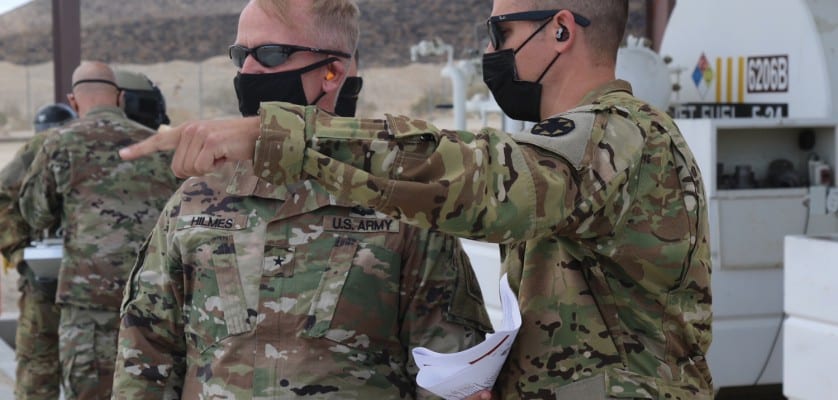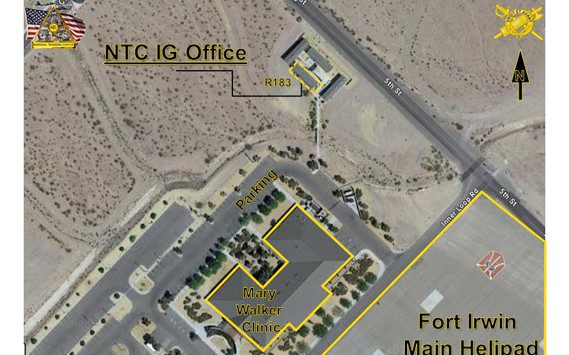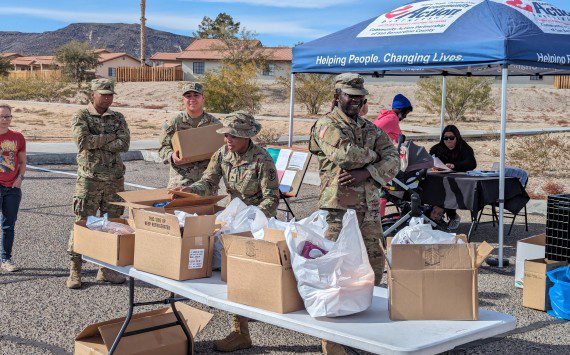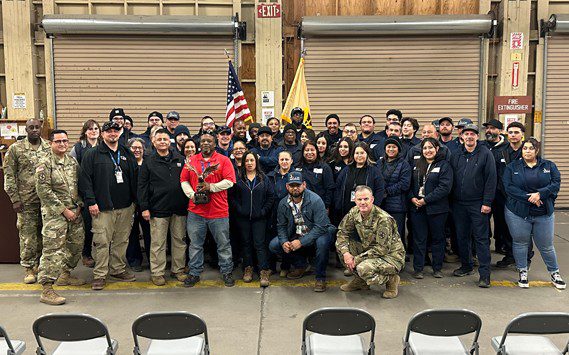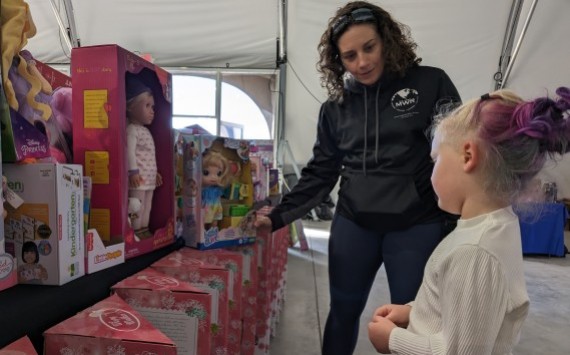FORT IRWIN, Calif. — Brig. Gen. Andrew Hilmes, Commander of the U.S. Army Combat Readiness Center, and Command Sgt. Maj. William Gardener, visited the National Training Center and Fort Irwin on April 27. The visit came with a focus on interacting with the Senior Commanders’ and Garrison safety offices to understand the challenges they face.
“Every installation has its own unique challenges,” said Hilmes. “By understanding the installation’s Army safety program, we’re able to learn and propagate best practices. But just as importantly, we want to understand the friction points on our installations to see if we could apply resources to fix safety issues.”
During his visit to the NTC, Hilmes visited the Safety Center of Excellence, attended a brief at the Ammo Supply Point, toured forwarding operating base Santa Fe, and attended a hot refuel brief at Bicycle Lake Airfield.
“I’ve been in the Army for about 26 years now, and I’ve visited the National Training Center more than a dozen times as a member of a rotational unit,” he said. “What really stands out to me from this visit, first and foremost, is the reputation of the National Training Center to provide safe, world-class training to our Army.”
Hilmes also attended an unexploded ordnance (UXO) brief and was briefed on how different agencies within the installation handle and demilitarize UXOs.
“Without a doubt, the way the NTC clears UXOs from the training area can be mimicked by other installations,” he said. “It’s an extremely deliberate approach. Tracking UXOs from cradle to grave is something other installations in the Army could utilize.”
During the end of his visit, Hilmes awarded Spc. Yagus the Safety Guardian Award for saving the lives of multiple soldiers in a Humvee when the vehicle’s brakes failed.
“There is a lot of training that goes across the Army each and every day, but when you look at rotational units coming here, and the amount of training done here, I don’t think any other installation handles as much large-scale training in volume like Fort Irwin,” Hilmes said. “Many of the processes when we bring in equipment by air, rail, and land, may seem like a daily routine to Fort Irwin, but for the rest of the Army it is not. They don’t have the same representatives and soldiers that Fort Irwin has.”






